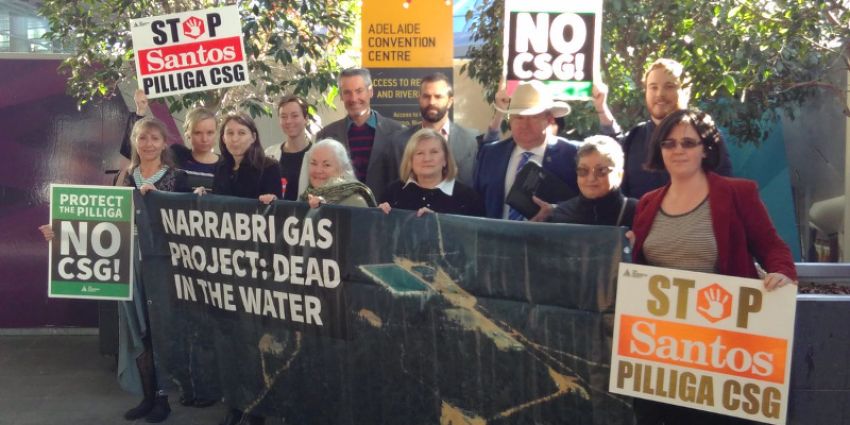
Two new reports by ecologists say Santos’s Response to Submissions (RTS) failed to address how endangered species will be impacted by its controversial Narrabri Coal Seam Gas (CSG) project in the Pilliga Forest.
The project involves constructing 850 gas wells and hundreds of kilometres of pipelines and roads in and around the Pilliga State Forest and nearby farmland. Santos still has not revealed exactly where it will drill the wells and where the hundreds of kilometres of pipes and roads will go.
An unprecedented 23,000 submissions to Santos’s Environmental Impact Statement (EIS) were received, of which just 1% were in favour of the project.
Former ecologist for the NSW Environment and Heritage Office David Paull wrote a response to the RTS disputing Santos’s findings that Box Gum woodlands were not present at the project site and that threatened Yellow Box gums were either absent or “occur at such low abundance to be meaningless in terms of plant composition”.
Paull said the company had also refused to sample the Bohena Creek Alluvium for stygofauna, the microscopic creatures that help purify groundwater, even though it was recommended by the Independent Expert Scientific Committee, which was set up by the federal government to assess groundwater impacts of coal and CSG developments.
In a separate report, ecologist David Milledge said Santos has failed to adequately respond to his submissions raising concerns about the questionable plant and animal surveys at the project site; the project’s impacts on animals; the use of offsets; and the rehabilitation of well and contaminated sites.
Milledge wrote in his report: “Unfortunately, most of the concerns raised in my submission on the EIS have not been satisfactorily addressed in Santos’ RTS. Some of these concerns have been ignored, others are quoted as included in submissions but are not further discussed and others are answered by simply reiterating sections of the EIS without elaboration.”
A 10-day survey, led by Milledge in 2011, found more than twice the animals in the project area than Santos had recorded from 2010 to 2014.
“Santos’s lack of success in detecting the presence of threatened vertebrate species over four years of surveys in the project area provides little confidence that the proposed scouting framework will be effective in avoiding impacts on significant values,” Milledge wrote.
Wilderness Society Newcastle campaign manager Naomi Hodgson said: “The Narrabri coal seam gas scheme will decimate the project area in the Pilliga Forest, with roads and gas pipelines ripped through NSW’s most important inland forest connecting hundreds of gas wells.
“Santos’s claim that the project will not have a significant impact is highly questionable when it does not identify which parts of the forest will be bulldozed and its studies seem to massively underestimate wildlife numbers.
“The Pilliga Forest is the largest temperate forest left in eastern Australia, the most important wildlife refuge for many endangered and threatened animals. It contains 900 native plant species, 240 bird species and more than 100 animal species, and many are threatened or endangered. In the project area alone, there are 23 nationally listed threatened species and 38 state-listed threatened species.
“As the only major surviving forest in inland NSW, it is a critical animal refuge, especially for threatened and endangered species. It’s the only home for the Pilliga mouse in Australia, the national stronghold for the south-eastern long-eared microbat, the NSW stronghold for the barking owl, and the most important home for koalas and the black-striped wallaby in inland NSW.”